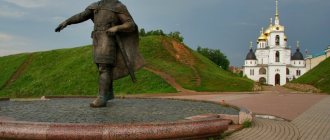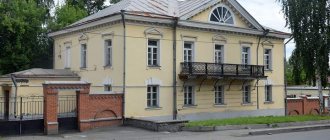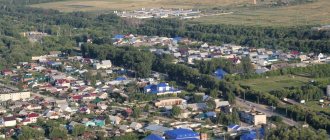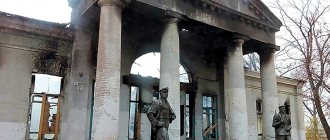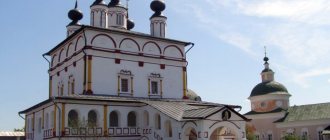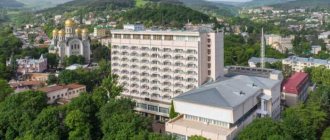Ney's story.
Neya is a small regional town in the Kostroma region of Russia. The city grew from a village formed around the railway station in 1906. With the construction of the station, active deforestation began in the Kostroma forests. As a result, large woodworking enterprises of Moscow industrialists and foreign investors began operating on its territory. By 26-29 years of the last century, the city had grown significantly and received the status of a workers' village, around which a district was formed, whose center was Neya. In 1958, Neya received city status. Today the population of Neya is about 9,000 people.
The construction of the city did not have a clear plan, so settlement occurred in a chaotic manner. The development of the area was influenced by marshy soil, so the city stretched along the railway for 8 kilometers.
Modern Neya
Today Neya is a small provincial town with a fairly developed industry. There are 14 industrial enterprises located in the city and its surroundings. The main direction is represented by forest processing, as well as bread and clothing production, flax processing, growing vegetable and livestock products.
Despite its modest size, the city has sufficient infrastructure; there are churches, a museum, a library, educational and preschool institutions, medical and administrative organizations.
Below we will give a detailed description of the main attractions of Ney that are worth visiting for city guests.
Since 1989, the Local History Museum has been operating in Neya, where you can get acquainted with the history of the creation and development of the city and its environs. See household items and crafts that the first settlers used. A separate exhibition of the museum is dedicated to the history of the development of astronautics.
Neya has several buildings made of wood at the beginning of the 20th century, which are considered architectural monuments. One of them is occupied by a cash settlement center. The backdrop of ancient carved houses will make a great memorable photo.
The fire tower, erected at the beginning of the last century, fits perfectly into the urban architecture of Ney.
In the central part of the city, a monument to Lenin and a memorial stele are traditionally installed, on which the names of the heroes who died in the Great Patriotic War are engraved. An eternal flame burns here, and local residents come to honor the memory of those killed in the war.
In 2007, one of the main attractions of Ney was consecrated - the new St. Spyridon Church.
Not me
- a city in the Kostroma region of the Russian Federation, the administrative center of the Neysky district. Population 10.7 thousand inhabitants (2010). The city is located on the right bank of the Neya River, 237 km from Kostroma. There are several options for the origin of the name of the city of Nei. The most reliable version seems to be the Meryan version, according to which “Neya” means “intertwined, winding river.” The name of the village comes from the name of the river.
The earliest mention of settlements on the territory of the Neya land dates back to 1502, when the Grand Duke of Moscow Vasily Ivanovich granted clerk Ivan Sadykov the Staro-Pokrovsky volost, the center of which was the Pokrovsky churchyard on the Neya River. The eastern part of the Neya region was crossed by the ancient Meryansky trade route, passing through the Unzha River, with. Soltanovo, Kotkishevo village, Parfenevo, Galich, connecting Siberia and Kazan with the center of Russia. This tract has been known since 1553.
In the first part of the 17th century, in one of the first geographical descriptions of Moscow State University in the “Book of the Big Drawing” it is said: “And the Neya River fell into the Unzha River from Galich.” Until 1778, these places were part of the Galich Principality, which united the territory on which in 1778, by Decree of Empress Catherine 2, 7 counties were formed, incl. Kologrivsky, which included the territory of the present Neysky district.
Photo from the TransPhoto community
The development of trade and production relations between the center of Russia and Siberia and the complicated foreign political situation in the Far East by the end of the 19th century raised the question of building a railway connecting the center with Siberia. The general direction of the road coincided with the ancient trade route. In 1903, construction began and by 1906 a section of the Vologda-Vyatka railway was built, and this is how the Neya stop appeared. The location for the station was chosen 2.5 km from the Neya River; this choice was dictated by topographical conditions and urban planning requirements. With the launch of the railway, excellent prospects opened up for entrepreneurs, since the road connected large forested areas with the capital and large port of St. Petersburg. In 1902, the Englishman Oscar Stevenya appeared in these places and, after assessing the situation, decided to build a wood processing plant. By the end of 1905, all construction and installation work was completed.
On September 20, 1926, the Neya stop in the Makaryevsky district of the Ivanovo-Voznesensk province was classified as a workers' settlement. The Neysky district as an administrative division was formed in 1929. “In April 1929, the Kostroma province was transformed into a district. The district included 14 districts. The Neysky district included the Kuzhbalsky district and a number of villages of the former Makaryevsky district of the Ivanovo-Voznesensk province.”
The center of the region was the village of Neya. The area of the district was 2.3 thousand square meters. km. It had a population of 27,160 people, including 19,590 rural people. With the formation of the Kostroma region, on August 13, 1944, the workers' village of Neya became part of it. In 1958, by Decree of the Presidium of the Supreme Soviet of the RSFSR, the working village of Neya was transformed into a city of regional subordination. The area is one of the forest areas of the region. In addition to forest wealth, the Neya region also has other natural resources. In the area there are peat bogs, deposits of oil shale, bituminous clay, and sulfur pyrites.
Modern Neya is more like a large village, since most of the houses are ordinary log houses. There are few high-rise buildings - 10-15 houses throughout the city. Previously, the city lived off wood processing plants. Now the factories have closed, the wood is no longer floated or processed, although deforestation continues, but the scale is no longer the same. The population does not live well, in principle, as elsewhere in small towns and villages of central Russia.
Around Neya there is a whole cluster of villages with sonorous Finno-Ugric names: Urzhum, Kokuevo, Mormysh, Kuzhbal, Zaingir, Totomitsa, Kotkishevo, Vozherovo, Balakhnya, Bolshaya Pasma, Nomzha, Polomka. The rivers flow: Nelsha, Lukhma, Kus, Ingir, Nomzha, Sendyuga, Nozma, Yakshish, Kaklash. All these Finno-Ugric names remind us of the recent times when the not yet Russified Merya and Mari, the ancestors of modern Neits, lived here.
Modern inhabitants of Neya
Temples of Ney
In the small area of Ney, spiritual life is developed. In addition to the new temple, there are ancient temples in the region:
- St. Nicholas Church in the village of Kotkishevo, dating back to the mid-18th century;
- Church of the Deposition of the Robe in the village of Vozherovskoye, dating back to the 18th century;
- Church of the Resurrection in the village of Vozherovskoye, dating back to the mid-18th century;
- Church of the Nativity of the Virgin Mary in the village of Kuzhbalskoye, from the second half of the 19th century;
- Church of the Assumption in the village of Yolkinskoye, from the 19th century;
- Church of the Epiphany and Church of the Intercession from the 18th-19th centuries.
Notes
- ↑ 123
www.gks.ru/free_doc/doc_2016/bul_dr/mun_obr2016.rar Population of the Russian Federation by municipalities as of January 1, 2016 - THE USSR. Administrative-territorial division of the union republics on January 1, 1980 / Compiled by V. A. Dudarev, N. A. Evseeva. - M.: Publishing house "Izvestia of the Soviets of People's Deputies of the USSR", 1980. - 702 p. — P. 149.
- ↑ 12
[zakon.scli.ru/ru/legal_texts/all/index.php?d_id4=4ab379b4-cac5-40d6-912d-57d2cad34852&do4=document&id4=1abf7e85-d0a0-48d7-adb9-3678085b3d66 CHARTER OF THE CITY MUNICIPAL FORMATION OE SETTLEMENT TOWN OF NEYA MUNICIPAL DISTRICT CITY NEYA AND NEYSKY DISTRICT OF KOstroma REGION] - [www.etomesto.ru/map-genshtab_o38-a/?z=1&x=43.878193&y=58.294388 Maps of the General Staff O-38 (A) 1:100000. Kostroma and Vologda regions.]
- [www.etomesto.ru/map-atlas_pochvennaya-karta/?z=1&x=43.880939307416&y=58.293772552307 Soil map of Russia]
- Distances between settlements are given using the Yandex.Maps service.
- [ru.climate-data.org/location/34262/CLIMAT: Neya]
- Belorukov D. F.
[kostromka.ru/belorukov/derevni/neya/223.php#225 The city of Neya. Villages, towns and cities of the Kostroma region] - ↑ 12
[www.neya.info/index.php?option=com_content&task=blogcategory&id=16&Itemid=39 Municipal district of Neya and Neya district - Historical background] // neya.info (Accessed September 13, 2010) - ↑ 1234567891011
www.MojGorod.ru/kostrom_obl/neja/index.html People's encyclopedia “My City”. Neya (city) - [demoscope.ru/weekly/ssp/rus59_reg2.php All-Union Population Census of 1959. The size of the urban population of the RSFSR, its territorial units, urban settlements and urban areas by gender] (Russian). Demoscope Weekly. Retrieved September 25, 2013. [www.webcitation.org/6GDOghWC9 Archived from the original on April 28, 2013].
- [demoscope.ru/weekly/ssp/rus70_reg2.php All-Union Population Census of 1970 The size of the urban population of the RSFSR, its territorial units, urban settlements and urban areas by gender.] (Russian). Demoscope Weekly. Retrieved September 25, 2013. [www.webcitation.org/6GDOiMstp Archived from the original on April 28, 2013].
- [demoscope.ru/weekly/ssp/rus79_reg2.php All-Union Population Census of 1979 The size of the urban population of the RSFSR, its territorial units, urban settlements and urban areas by gender.] (Russian). Demoscope Weekly. Retrieved September 25, 2013. [www.webcitation.org/6GDOjhZ5L Archived from the original on April 28, 2013].
- [demoscope.ru/weekly/ssp/rus89_reg2.php All-Union Population Census of 1989. Urban population]. [www.webcitation.org/617x0o0Pa Archived from the original on August 22, 2011].
- [www.perepis2002.ru/ct/doc/1_TOM_01_04.xls All-Russian Population Census 2002. Volume. 1, table 4. Population of Russia, federal districts, constituent entities of the Russian Federation, districts, urban settlements, rural settlements - regional centers and rural settlements with a population of 3 thousand or more]. [www.webcitation.org/65AdCU0q3 Archived from the original on February 3, 2012].
- [docs.cntd.ru/document/460161770 Resolution of the Administration of the Kostroma Region dated June 24, 2008 No. 184-A “On approval of the Register of settlements of the Kostroma Region”]. Retrieved February 22, 2015. [www.webcitation.org/6WXQ4l8Fd Archived from the original on February 22, 2015].
- [www.gks.ru/bgd/regl/B09_109/IssWWW.exe/Stg/d01/tabl-21-09.xls Number of permanent population of the Russian Federation by cities, urban-type settlements and districts as of January 1, 2009]. Retrieved January 2, 2014. [www.webcitation.org/6MJmu0z1u Archived from the original on January 2, 2014].
- [www.gks.ru/free_doc/new_site/perepis2010/croc/Documents/Vol1/pub-01-11.xlsx Population Census 2010. Population of Russia, federal districts, constituent entities of the Russian Federation, city districts, municipal districts, urban and rural settlements] (Russian). Federal State Statistics Service. Retrieved February 9, 2013. [www.webcitation.org/6GDBk0rPa Archived from the original on April 28, 2013].
- [www.gks.ru/free_doc/doc_2012/bul_dr/mun_obr2012.rar Population of the Russian Federation by municipalities. Table 35. Estimated resident population as of January 1, 2012]. Retrieved May 31, 2014. [www.webcitation.org/6PyOWbdMc Archived from the original on May 31, 2014].
- [www.gks.ru/free_doc/doc_2013/bul_dr/mun_obr2013.rar Population of the Russian Federation by municipalities as of January 1, 2013. - M.: Federal State Statistics Service Rosstat, 2013. - 528 p. (Table 33. Population of urban districts, municipal districts, urban and rural settlements, urban settlements, rural settlements)]. Retrieved November 16, 2013. [www.webcitation.org/6LAdCWSxH Archived from the original on November 16, 2013].
- [www.gks.ru/free_doc/doc_2014/bul_dr/mun_obr2014.rar Table 33. Population of the Russian Federation by municipalities as of January 1, 2014]. Retrieved August 2, 2014. [www.webcitation.org/6RWqP50QK Archived from the original on August 2, 2014].
- [www.gks.ru/free_doc/doc_2015/bul_dr/mun_obr2015.rar Population of the Russian Federation by municipalities as of January 1, 2015]. Retrieved August 6, 2015. [www.webcitation.org/6aaNzOlFO Archived from the original on August 6, 2015].
- [www.neya.info/images/content/oy.rar Municipal district of Neya and Neya district - Education] // neya.info (Accessed September 13, 2010)
- [www.mojgorod.ru/kostrom_obl/neja/index.html People's encyclopedia “My City”. Neya (Kostroma region)] // mojgorod.ru (Retrieved September 13, 2010)
- [sobory.ru/article/index.html?object=14028 Neya. Church of Spyridon of Trimifuntsky] // sobory.ru (Retrieved September 13, 2010)
Results
Two rivers flow through the city - Neya and Nelsha. Therefore, for outdoor recreation, it is worth going fishing. However, it is worth remembering that the area adjacent to the river beds is swampy. Therefore, it is better to go fishing accompanied by local residents who know the area.
The provincial town may not seem remarkable at first glance. However, it is worth remembering that the main attraction of Ney is its nature. It was on this site, from an impenetrable forest, that the city grew.
A relaxing holiday in nature - that’s what awaits tourists in Neya!
Transport
Neya is connected by bus to Kostroma (two round trips daily as of June 2012). Neya is connected by rail along the Trans-Siberian Railway to the cities of the Urals, Siberia and the Far East, as well as to Moscow and St. Petersburg.
The federal highway “Ekaterinburg - St. Petersburg”, which is under construction, passes through the city. There is a bypass road.
There are three bus routes in the city. The basis of the fleet is Gazelle minibuses and PAZ-3205 small-capacity buses. However, at the moment (March 2014) there is no bus service with nearby settlements, since the quality of roads leads to refusals of transport companies to provide transportation services. The local population, trying to earn money by private transportation, also often refuses to provide services for the same reason.
Excerpt characterizing Ney (city)
Prince Andrei was called into his father’s office, who wanted to say goodbye to him privately. Everyone was waiting for them to come out. When Prince Andrei entered the office, the old prince, wearing old man's glasses and in his white robe, in which he did not receive anyone except his son, was sitting at the table and writing. He looked back. -Are you going? - And he began to write again. - I came to say goodbye. “Kiss here,” he showed his cheek, “thank you, thank you!” - What do you thank me for? “You don’t hold on to a woman’s skirt for not being overdue.” Service comes first. Thank you, thank you! - And he continued to write, so that splashes flew from the crackling pen. - If you need to say something, say it. I can do these two things together,” he added. - About my wife... I’m already ashamed that I’m leaving her in your arms... - Why are you lying? Say what you need. - When it’s time for your wife to give birth, send to Moscow for an obstetrician... So that he is here. The old prince stopped and, as if not understanding, stared with stern eyes at his son. “I know that no one can help unless nature helps,” said Prince Andrei, apparently embarrassed. – I agree that out of a million cases, one is unfortunate, but this is her and my imagination. They told her, she saw it in a dream, and she is afraid. “Hm... hm...” the old prince said to himself, continuing to write. - I'll do it. He drew out the signature, suddenly turned quickly to his son and laughed. - It's bad, huh? - What's bad, father? - Wife! – the old prince said briefly and significantly. “I don’t understand,” said Prince Andrei. “There’s nothing to do, my friend,” said the prince, “they’re all like that, you won’t get married.” Do not be afraid; I won't tell anyone; and you know it yourself. He grabbed his hand with his bony little hand, shook it, looked straight into his son’s face with his quick eyes, which seemed to see right through the man, and laughed again with his cold laugh. The son sighed, admitting with this sigh that his father understood him. The old man, continuing to fold and print letters, with his usual speed, grabbed and threw sealing wax, seal and paper. - What to do? Beautiful! I'll do everything. “Be at peace,” he said abruptly while typing. Andrei was silent: he was both pleased and unpleasant that his father understood him. The old man stood up and handed the letter to his son. “Listen,” he said, “don’t worry about your wife: what can be done will be done.” Now listen: give the letter to Mikhail Ilarionovich. I am writing to tell him to use you in good places and not keep you as an adjutant for a long time: it’s a bad position! Tell him that I remember him and love him. Yes, write how he will receive you. If you are good, serve. Nikolai Andreich Bolkonsky’s son will not serve anyone out of mercy. Well, now come here. He spoke in such a rapid-fire manner that he did not finish half the words, but his son got used to understanding him. He led his son to the bureau, threw back the lid, pulled out the drawer and took out a notebook covered in his large, long and condensed handwriting. “I must die before you.” Know that my notes are here, to be handed over to the Emperor after my death. Now here is a pawn ticket and a letter: this is a prize for the one who writes the history of Suvorov’s wars. Send to the academy. Here are my remarks, after me read for yourself, you will find benefit. Andrei did not tell his father that he would probably live for a long time. He understood that there was no need to say this. “I will do everything, father,” he said. - Well, now goodbye! “He let his son kiss his hand and hugged him. “Remember one thing, Prince Andrei: if they kill you, it will hurt my old man...” He suddenly fell silent and suddenly continued in a loud voice: “and if I find out that you did not behave like the son of Nikolai Bolkonsky, I will be ... ashamed!” – he squealed. “You don’t have to tell me this, father,” the son said, smiling. The old man fell silent. “I also wanted to ask you,” continued Prince Andrey, “if they kill me and if I have a son, do not let him go from you, as I told you yesterday, so that he can grow up with you... please.” - Shouldn’t I give it to my wife? - said the old man and laughed. They stood silently opposite each other. The old man's quick eyes were directly fixed on his son's eyes. Something trembled in the lower part of the old prince’s face. - Goodbye... go! - he suddenly said. - Go! - he shouted in an angry and loud voice, opening the office door. - What is it, what? - asked the princess and princess, seeing Prince Andrei and for a moment the figure of an old man in a white robe, without a wig and wearing old man’s glasses, leaning out for a moment, shouting in an angry voice. Prince Andrei sighed and did not answer. “Well,” he said, turning to his wife. And this “well” sounded like a cold mockery, as if he was saying: “now do your tricks.” – Andre, deja! [Andrey, already!] - said the little princess, turning pale and looking at her husband with fear. He hugged her. She screamed and fell unconscious on his shoulder. He carefully moved away the shoulder on which she was lying, looked into her face and carefully sat her down on a chair. “Adieu, Marieie, [Goodbye, Masha,”] he said quietly to his sister, kissed her hand in hand and quickly walked out of the room. The princess was lying in a chair, M lle Burien was rubbing her temples. Princess Marya, supporting her daughter-in-law, with tear-stained beautiful eyes, still looked at the door through which Prince Andrei came out, and baptized him. From the office one could hear, like gunshots, the often repeated angry sounds of an old man blowing his nose. As soon as Prince Andrei left, the office door quickly opened and the stern figure of an old man in a white robe looked out. - Left? Well, good! - he said, looking angrily at the emotionless little princess, shook his head reproachfully and slammed the door. In October 1805, Russian troops occupied the villages and towns of the Archduchy of Austria, and more new regiments came from Russia and, burdening the residents with billeting, were stationed at the Braunau fortress. The main apartment of Commander-in-Chief Kutuzov was in Braunau. On October 11, 1805, one of the infantry regiments that had just arrived at Braunau, awaiting inspection by the commander-in-chief, stood half a mile from the city. Despite the non-Russian terrain and situation (orchards, stone fences, tiled roofs, mountains visible in the distance), despite the non-Russian people looking at the soldiers with curiosity, the regiment had exactly the same appearance as any Russian regiment had when preparing for a review somewhere in the middle of Russia. In the evening, on the last march, an order was received that the commander-in-chief would inspect the regiment on the march. Although the words of the order seemed unclear to the regimental commander, and the question arose how to understand the words of the order: in marching uniform or not? In the council of battalion commanders, it was decided to present the regiment in full dress uniform on the grounds that it is always better to bow than not to bow. And the soldiers, after a thirty-mile march, did not sleep a wink, they repaired and cleaned themselves all night; adjutants and company commanders counted and expelled; and by morning the regiment, instead of the sprawling, disorderly crowd that it had been the day before during the last march, represented an orderly mass of 2,000 people, each of whom knew his place, his job, and of whom, on each of them, every button and strap was in its place and sparkled with cleanliness . Not only was the outside in good order, but if the commander-in-chief had wanted to look under the uniforms, he would have seen an equally clean shirt on each one and in each knapsack he would have found the legal number of things, “sweat and soap,” as the soldiers say. There was only one circumstance about which no one could be calm. It was shoes. More than half the people's boots were broken. But this deficiency was not due to the fault of the regimental commander, since, despite repeated demands, the goods were not released to him from the Austrian department, and the regiment traveled a thousand miles. The regimental commander was an elderly, sanguine general with graying eyebrows and sideburns, thick-set and wider from chest to back than from one shoulder to the other. He was wearing a new, brand new uniform with wrinkled folds and thick golden epaulettes, which seemed to lift his fat shoulders upward rather than downward. The regimental commander had the appearance of a man happily performing one of the most solemn affairs of life. He walked in front of the front and, as he walked, trembled at every step, slightly arching his back. It was clear that the regimental commander was admiring his regiment, happy with it, that all his mental strength was occupied only with the regiment; but, despite the fact that his trembling gait seemed to say that, in addition to military interests, the interests of social life and the female sex occupied a significant place in his soul.

